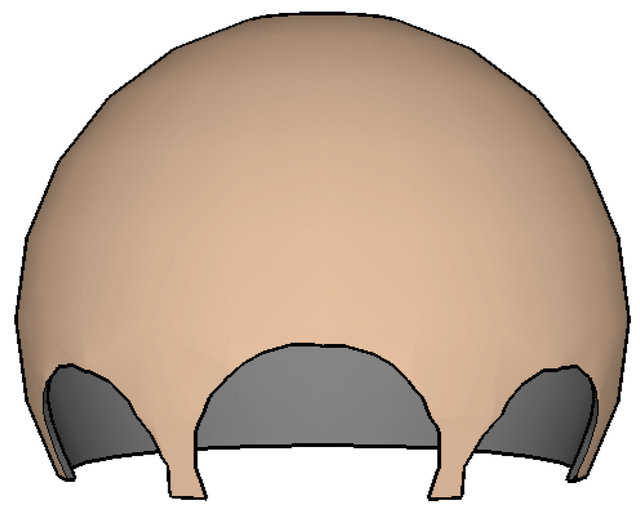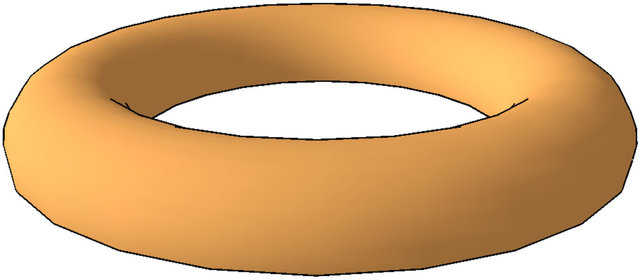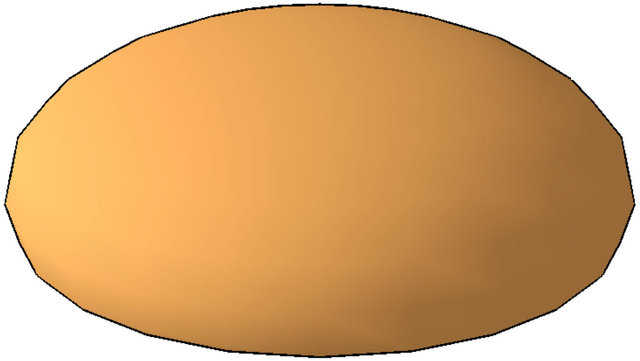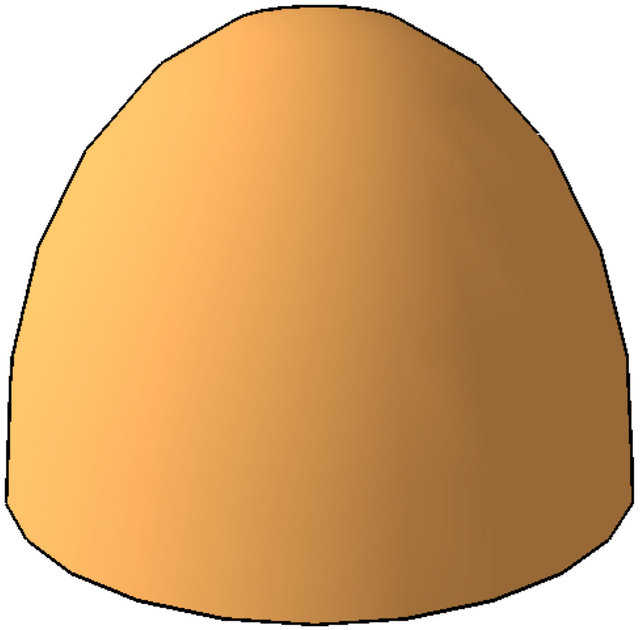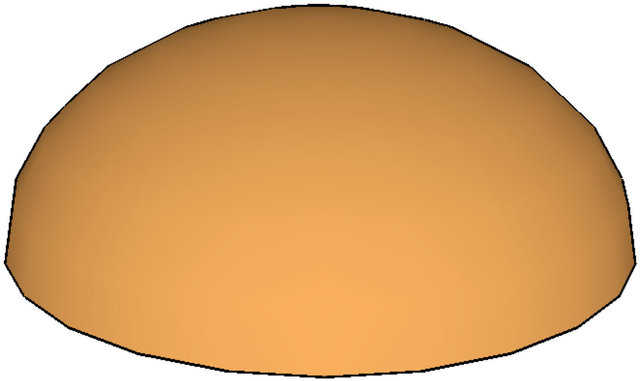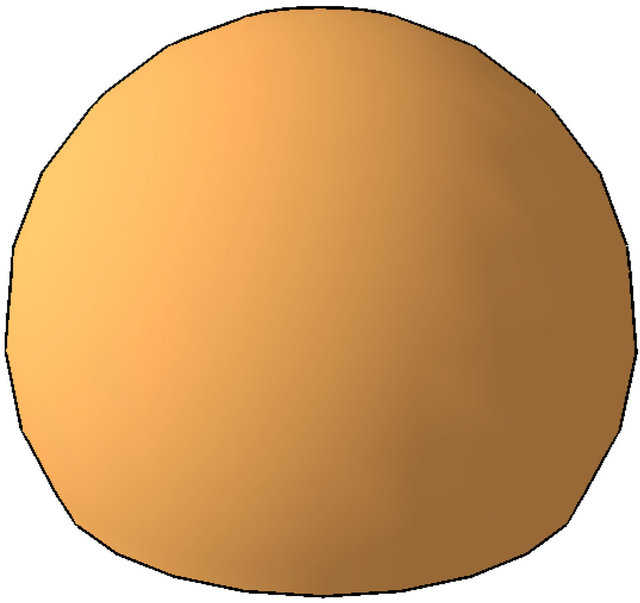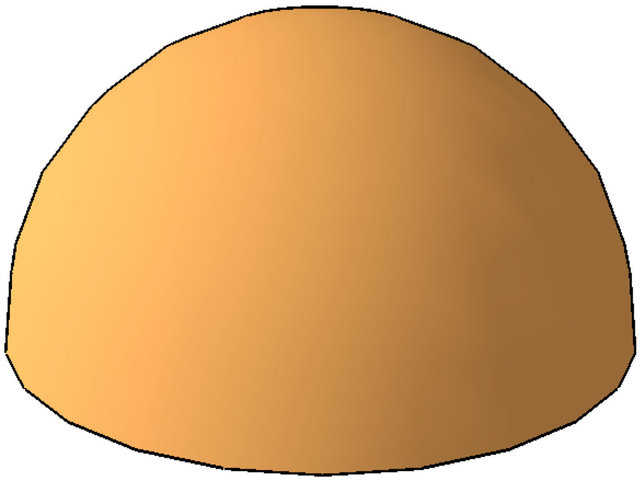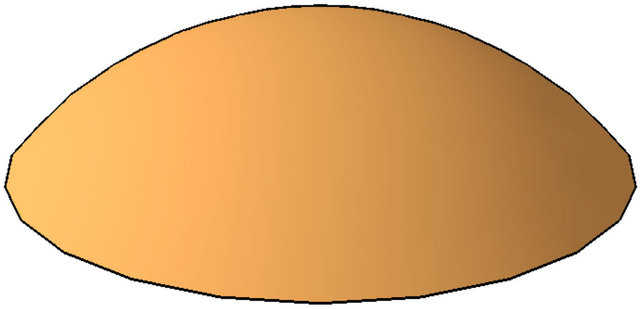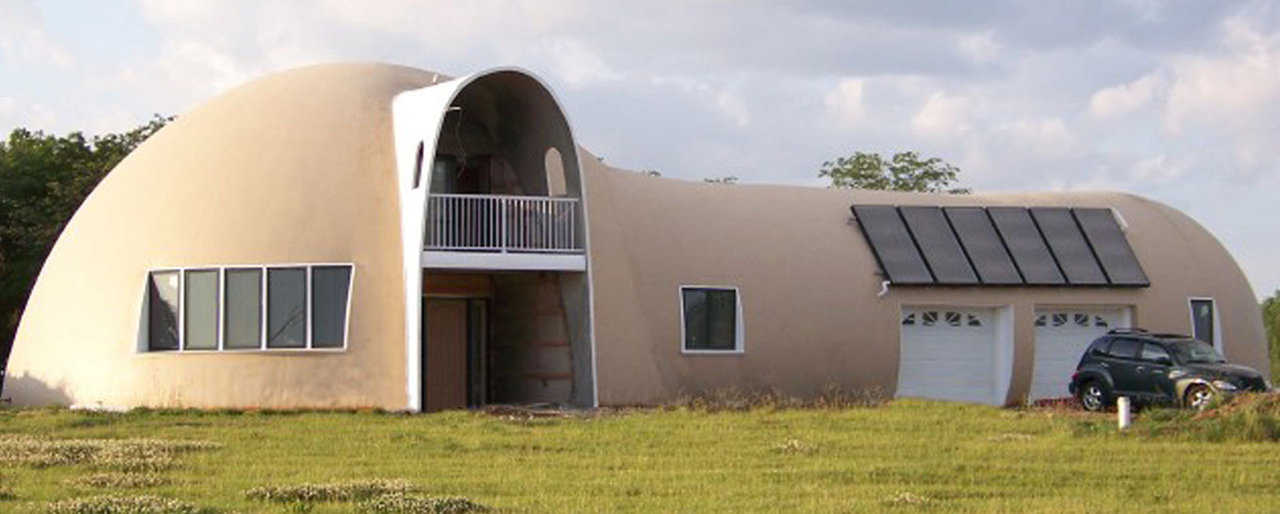
Miller Residence — The Miller’s Dome is a hemisphere with a 48-foot diameter and a tubular extension, built using a single Airform.
Monolithic Dome Shapes
Choosing a Profile and Shape
The profile of a dome determines the size of its surface area or dome shell, and the amount of surface area significantly affects construction cost. In other words, the more surface area there is, the more expensive it will be.
Hemisphere or Oblate Ellipse?
In a dome that is a hemisphere, the area of the floor is equal to pi (3.14159) multiplied by the radius squared or pi X radius X radius. The surface area of that hemisphere is exactly 2 X pi X radius squared. So, the surface area of a hemisphere dome is precisely twice that of its floor area.
But most of us live only in the bottom eight feet of a structure. Some of that space above us may not be what we want or need. In that case, we might consider a different profile.
An oblate ellipse may better suit us. It can save a considerable amount of square footage of the dome shell and still provide us with virtually the same amount of floor or living area.
For that reason, most of the homes Monolithic designs have an oblate ellipse profile. That includes two-story domes; they go straight up and are then topped with an oblate ellipse.
Big Domes
When we design big domes with diameters of at least 200 feet, we have to be even more cognizant of the geometry. Consider a dome that is 200 feet in diameter and 50 feet in height. That’s a great dome! Its surface area equals 39,270 square feet; its floor area equals 31,416 square feet. So, the surface area is only 25 percent larger than its floor area. We have used the least amount of materials to build this dome, but we have given ourselves a maximum amount of usable square footage.
Now consider what happens when we keep the diameter at 200 feet but raise the height and create a dome that is 200 feet by 67.6 feet. Its floor area remains at 31,416 square feet, but its surface area increases to 45,802 square feet. Obviously, such an increase affects price and is not something you want to do if there is no need for it.
And here’s what happens if we design that same dome as a hemisphere, 200’ X 100’: floor area = 31,416 square feet; surface area = 62,832 square feet.
An Appropriate Profile
Sometimes people want a dome with a profile that is not appropriate to their needs. For example, a 200’ X 100’ hemisphere dome is not a good choice for a church. To enclose its floor area, you must build 62,832 square feet of surface area! A church has no practical use for all that space above the congregation.
On the other hand, that very same hemisphere is a most appropriate choice for a bulk storage facility. If you’re storing fertilizer, for example, you want and need all that upper space. You might even consider designing your storage dome with an integrated stemwall of twenty, thirty or forty feet and topping it with a hemisphere.
We have illustrated three domes, each with exactly the same amount of floor area below 14 feet in height. But each has a different footprint and a different surface area. It’s important that dome buyers understand these relationships, so they can get the maximum benefit for their money.
At Monolithic, we are more than happy to review the geometry of any project.
Shapes
Here are most of the pure geometric shapes we use in designing the Airforms that are inflated to build Monolithic Domes. These shapes are shown individually. But they can be intersected with each other to provide additional combinations. And their connections can be smoothed to better define the sculptured shapes. In addition to these regular shapes, others can be airformed as well.
FAQs about Monolithic Dome shapes
Q: Since the center section is not constructed in a torus, is it less expensive to build?
A: Actually, no. The dome curves in on itself again to make the tube, thereby increasing the surface area of the dome shell.
Q: What is the usual size of a torus and have you ever built one?
A: A common home size is 66 feet in diameter with a 32-foot diameter center section. It definitely can be much larger. So far, the torus has failed the cost test. A Monolithic Dome of equal size is about the same price.
Q: What is the maximum height at the center of an oblate ellipsoid style dome?
A: An oblate ellipsoid is an ideal shape for homes and one-story buildings. It brings the height of the dome down; but the walls at the base are more vertical so it provides more shoulder room. In general, an oblate ellipsoid should not have a minor-axis-to-major-axis ratio greater than 1.45. Consider a 32-foot diameter dome. The major axis is 16 feet. Divide 16 by 1.45 and the minor axis is 11 feet. If we wanted the building to be two-stories high, we would put a 7-foot or 8-foot stemwall under the elliptical dome for a total height of 19 or 20 feet. The Oberon plan is an oblate ellipsoid, 32 feet in diameter and 12 feet tall. It makes a nice, one-story home with one, two, three or even four bedrooms.
Q: The prolate looks as though it may have better interior feel and window options. Am I seeing this correctly?
A: Sometimes a prolate fits the lot better. Rarely does it make the windows or shape better. Mostly,it may look better on paper; but in reality, you cannot see anything but a small part of it from the street or inside. There is very little benefit to the prolate, except for site considerations. The Monolithic Dome called " Eye of the Storm " has the long axis parallel with the beach; therefore more beach can be seen from the house. The house still looks circular from the beach. It also looks circular from within. It just has more exposure to the ocean because it is a prolate. The prolate costs more per square foot. It takes more material to enclose a smaller space than a traditional circular shape.
Q: Are profiles other than the circular and elliptical available?
A: Yes – we can do cones, cylinders, parabolas, some hyperbolics, and some sculpted shapes. Air tends to blow round, therefore at least one dimension of the Airform must be round. The only limitations are that it must be inflatable and engineer-able.
Dome Variations/Configurations
These design concepts have been approved as feasible and reasonable for our use.
Updated April 2009
